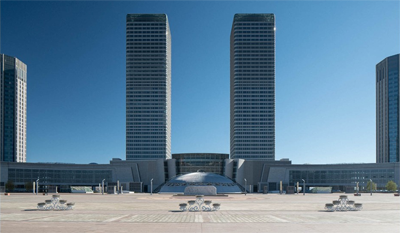 The job is finished on time and under budget. The punch list was minor. There were no claims and the retention was paid as expected. The contracting team and subs made a decent margin on a project that required some innovative structural systems and finishes. The project was a success for the contractor. Right?
The job is finished on time and under budget. The punch list was minor. There were no claims and the retention was paid as expected. The contracting team and subs made a decent margin on a project that required some innovative structural systems and finishes. The project was a success for the contractor. Right?
The project was finished on time and under budget. The design was groundbreaking and is likely to be an award winner for the global design team, one that had been awarded the design over a myriad of global design stars. The building has been commissioned and the invoices paid. The project was a success for the architects. Right?
Maybe not.
Take a look at the Chinese city of Kangbashi. It was built as a city for 1 million occupants in the northern part of China by the Chinese government. It is full of groundbreaking, design stretching forms and construction methods like the Ordos Museum designed by MAD architects. It has all of the elements of a major city that reflects the latest of planning concepts except that there are a number of incomplete buildings, and many that are complete are uninhabited.
It is not quite a success and it is being called by some international critics a ghost town. Amazing to see, it now houses around 100,000 inhabitants and not the 1 million that it was built for. The structures are groundbreaking but, according to CNN, empty.
Some of the world’s most capable designers were attracted to design major facilities in the city, but now they must be wondering what happened. Where are the people who were supposed to use those buildings and houses and public structures?
The Chinese government in 2000 poured over $1 billion into the development of this city that many call a ghost town and the Chinese government calls “hopeful.” They are hopeful that something happens to complete the buildings and move the new residents into the city surrounded by desert. Even the designers who got to stretch the limits of design must be wondering, “What if you built it and no one came?”


